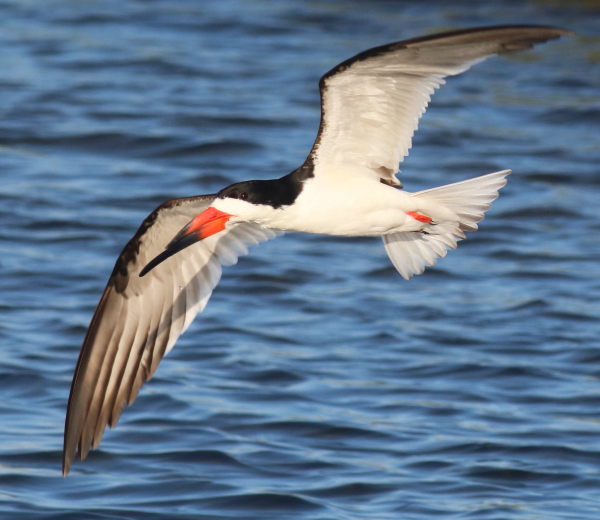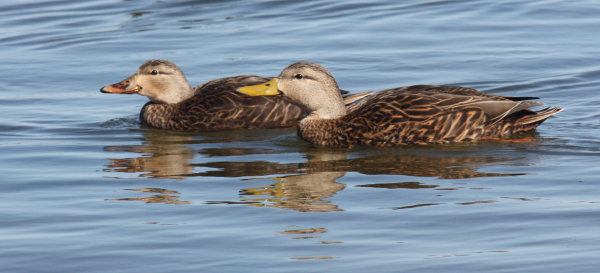
Louisiana’s coast supports a high percentage of several coastal bird species, including Black Skimmers and Mottled Ducks (photos by Paul Konrad).

|
The Mississippi River Delta and the associated Louisiana Gulf Coast has been acknowledged as globally significant for a variety of birds, providing large and diverse habitats for many species of birds found in North America and beyond. The authors of a new scientific publication collected and collated available data to estimate the nesting population sizes of 17 key bird species in coastal Louisiana. They then summarized the importance of the Louisiana coast for these bird species in the contexts of regional, national, and global populations of these birds.
The Mississippi River has shaped much of Louisiana’s unique coast, which includes extensive marshes, islands, sandy barrier headlands, and isolated stands of maritime forest on natural levees, cheniers, and canal banks. Louisiana thus supports large populations of many bird species that rely on wetlands and ocean shores and require coastal islands for nesting sites.
Preliminary estimates indicate that Louisiana’s coast supports a high percentage of several coastal bird species. For example, the authors estimated that 73 percent of the United States’ total population of Sandwich Terns nest in coastal Louisiana, and comparable estimates range from 24 to 55 percent for Mottled Ducks, Black Skimmers, Tricolored Herons, Clapper Rails, Wilson’s Plovers, Royal Terns, and Seaside Sparrows.
Because most of these and other bird species are distributed across state, regional, and national jurisdictions, management of birds and bird habitats in Louisiana has wide-reaching implications for the conservation of these shared natural resources. This publication is intended to be a source for land managers and biologists who administer bird resources in North America and beyond.
The article, entitled “The Regional, National, and International Importance of Louisiana’s Gulf Coast to Avifauna,” which was published in the Wilson Journal of Ornithology, can be accessed at https://wjoonline.org/doi/abs/10.1676/18-111